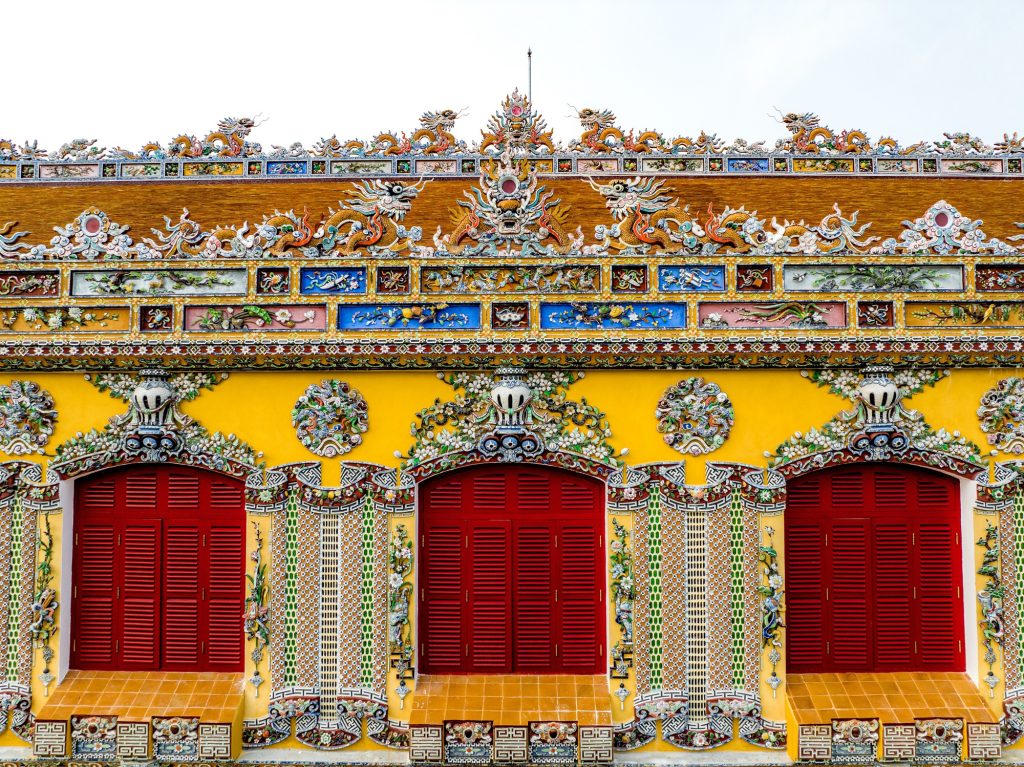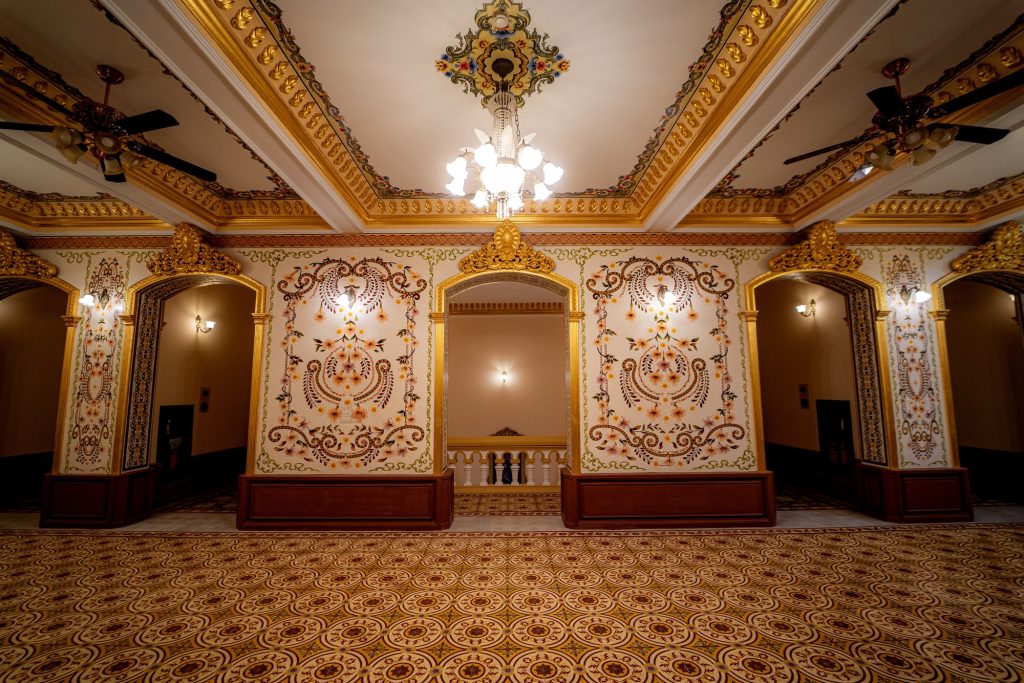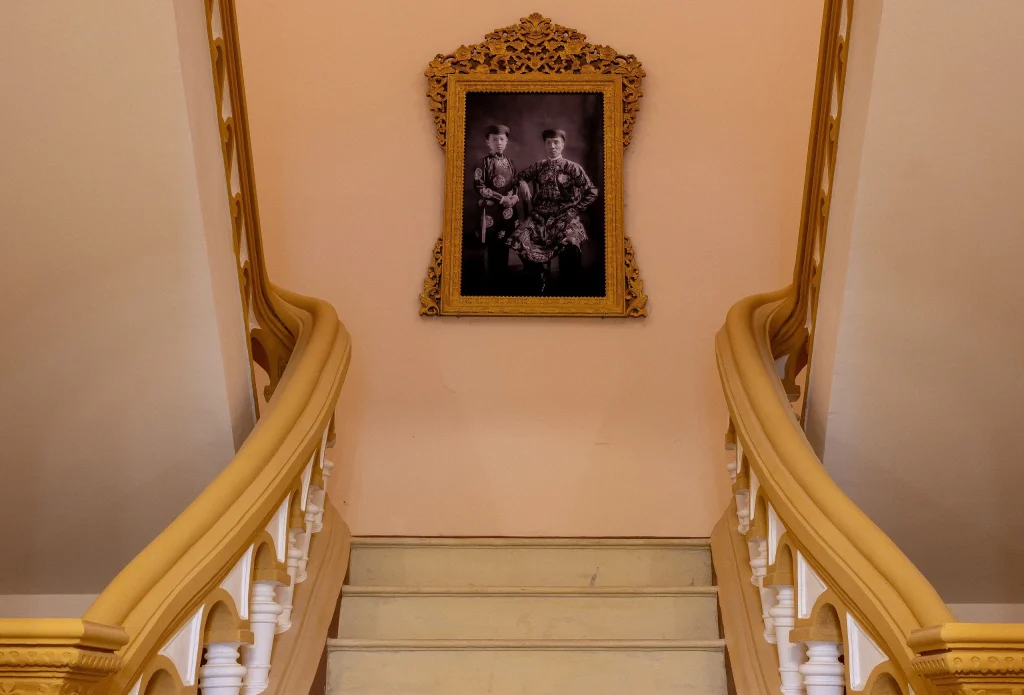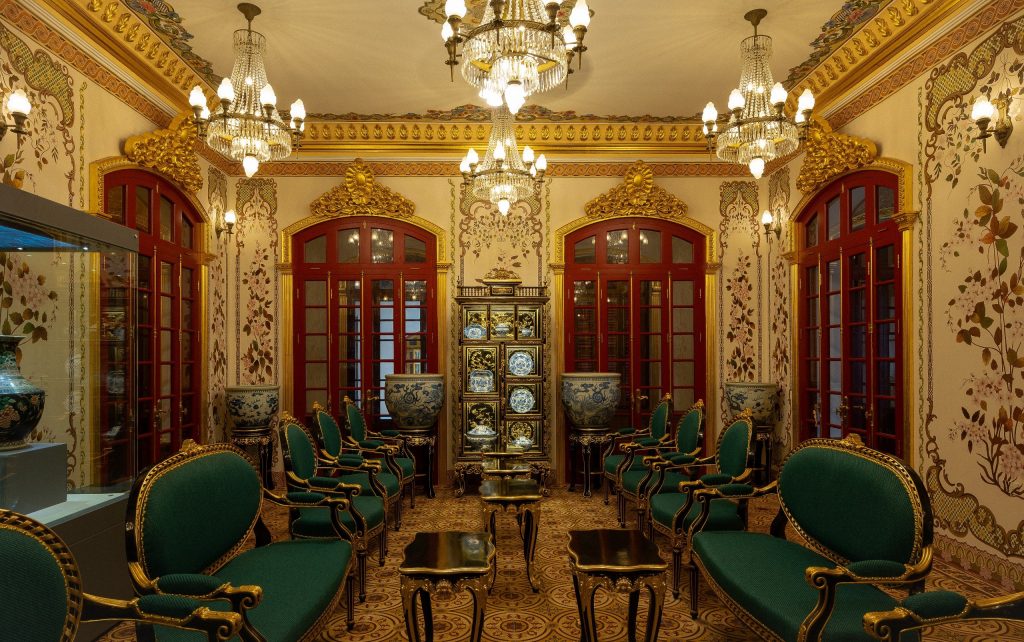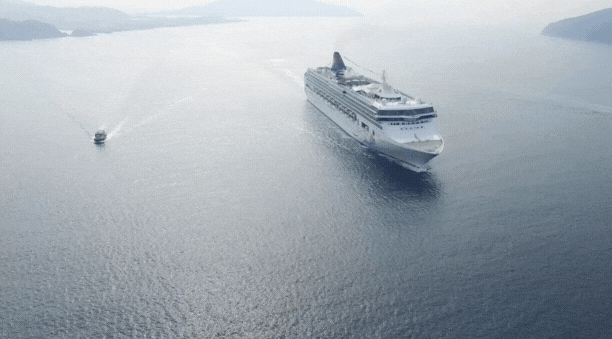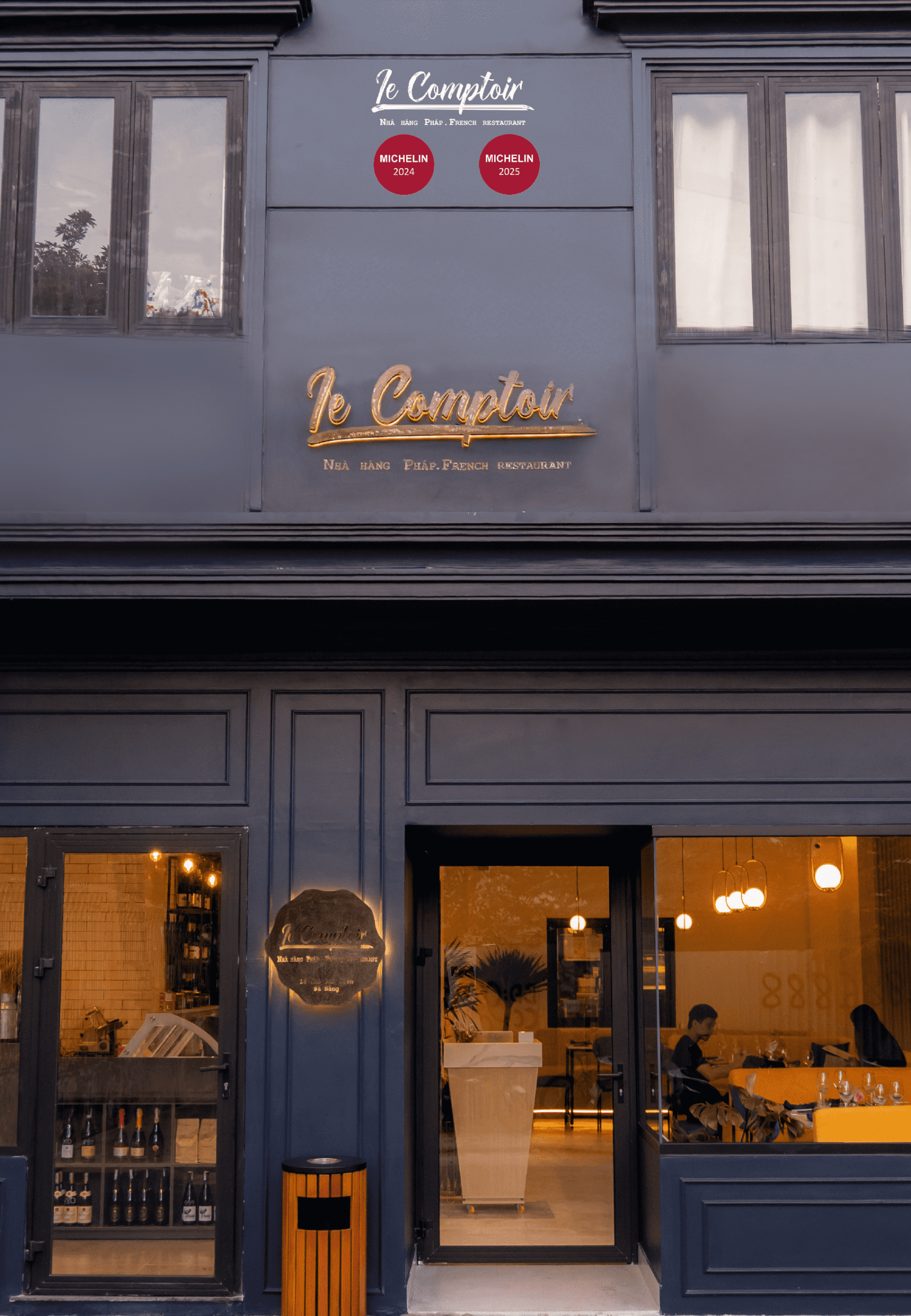The Kien Trung Palace (Điện Kiến Trung) stands as a remarkable testament to the architectural grandeur of the Nguyen Dynasty, seamlessly integrating the opulence of imperial tradition with the contemporary influences of the 20th century, including notable Western architectural elements.
As reported by the Hue Monuments Conservation Center, Kien Trung Palace, also referred to as Kien Trung Pavilion, was constructed during the reign of Emperor Khai Dinh. The name “Kien” signifies the act of establishing or building, while “Trung” conveys notions of integrity and impartiality.
Historical documentation reveals that two previous structures occupied the site before the palace’s construction: Minh Viễn Pavilion, also known as Minh Viễn Tower (1827), and Du Cửu Pavilion, or Du Cửu Tower (1913).
Minh Viễn Pavilion, erected under Emperor Minh Mang, was a substantial wooden edifice comprising three levels. It served as a venue for the emperor to appreciate the scenery and enjoy leisure. Esteemed for its artistic value, Minh Viễn Pavilion was lauded by Emperor Thieu Tri as “the foremost view among the twenty scenic spots of the Imperial City of Hue.” However, this structure was dismantled in 1876 during the reign of Emperor Tu Duc due to severe deterioration.
In 1913, Emperor Duy Tan’s court commissioned the construction of a new pavilion on the same site, named Du Cửu Pavilion.
In 1916, Emperor Khai Dinh renamed Du Cửu Pavilion to Kien Trung Pavilion. By 1921, he initiated a complete overhaul of the palace, incorporating European and Asian architectural and decorative styles. This ambitious project, guided by French architects, engineers, and the Ministry of Public Works, culminated in the palace’s reconstruction within two years, from 1921 to 1923.
During the reign of Emperor Bao Dai, the palace was further renovated and equipped with modern Western amenities, serving as the residence for Emperor Bao Dai and his family.
The subsequent years of Vietnam’s history, following 1945, brought significant upheaval, leading to the near-total destruction of the palace, along with many other significant structures within the Imperial Citadel and Forbidden City. Only the remnants of the foundation remained.
Following nearly five years of meticulous restoration and enhancement, Kien Trung Palace – a distinctive blend of Nguyen Dynasty grandeur and 20th-century Western architectural flair – is now open for visitor and tourism in 2024







